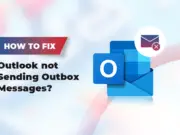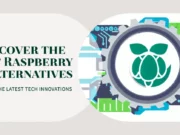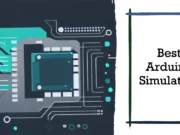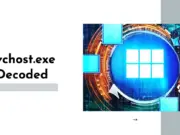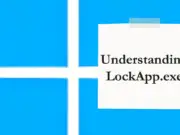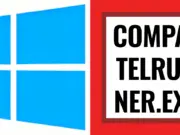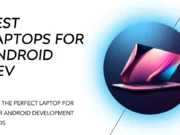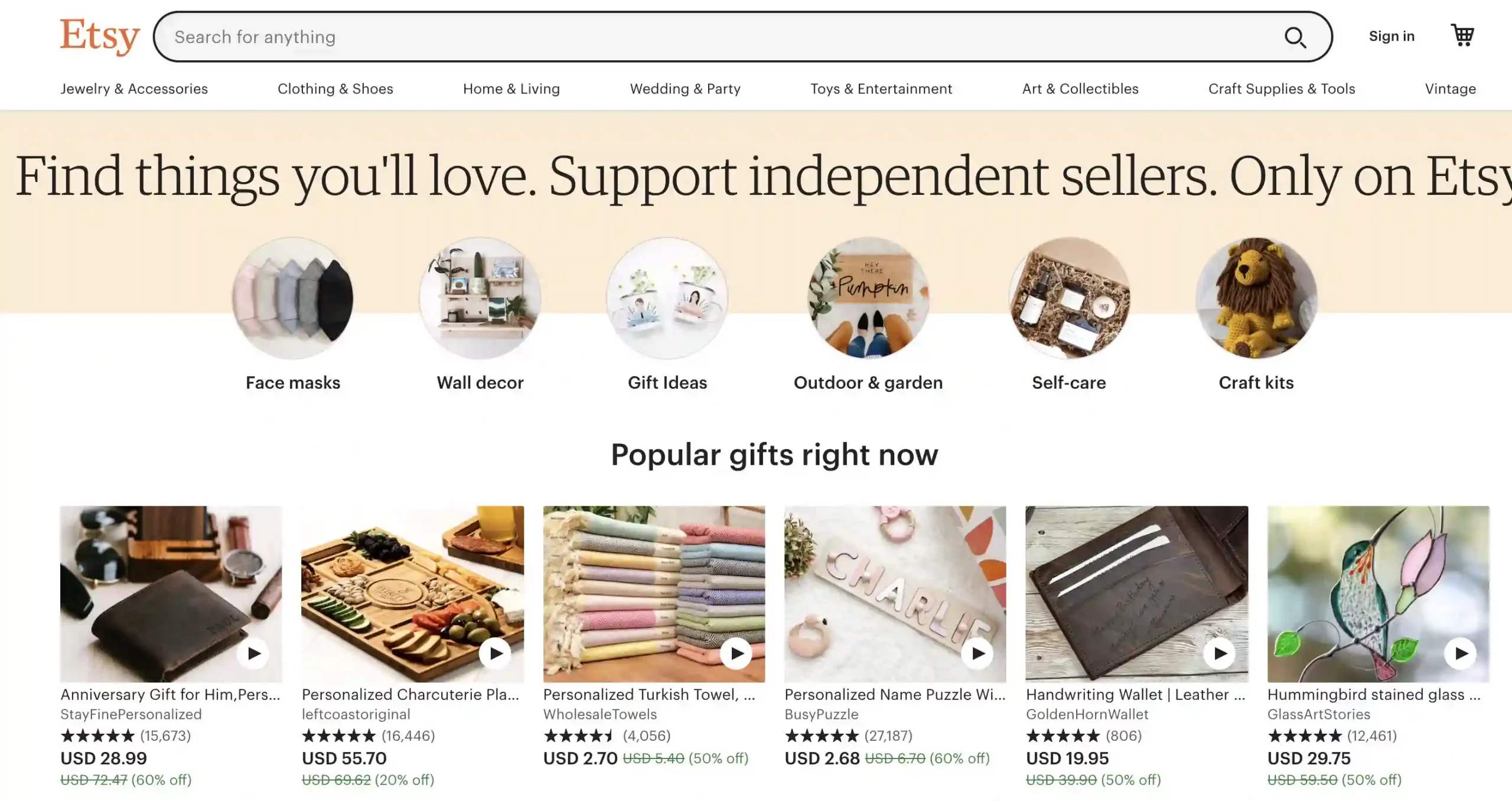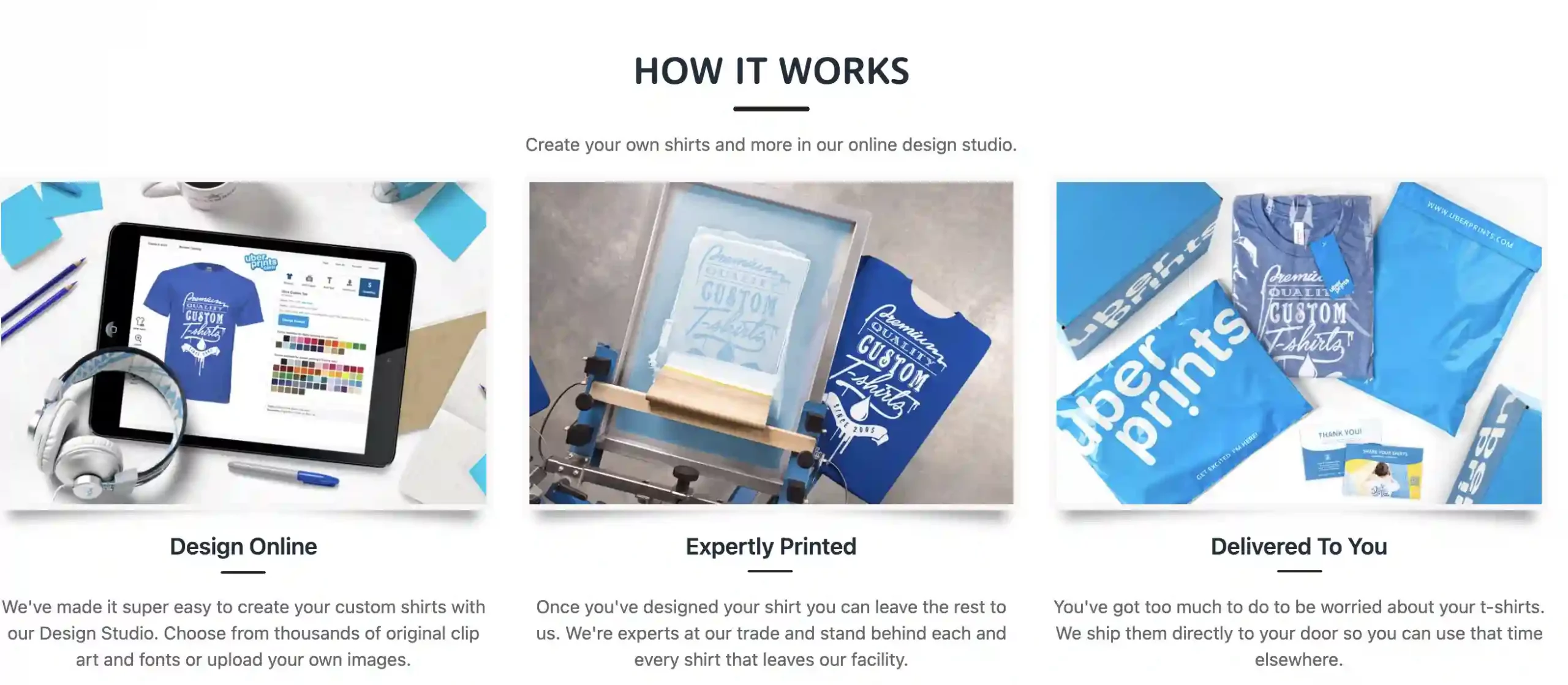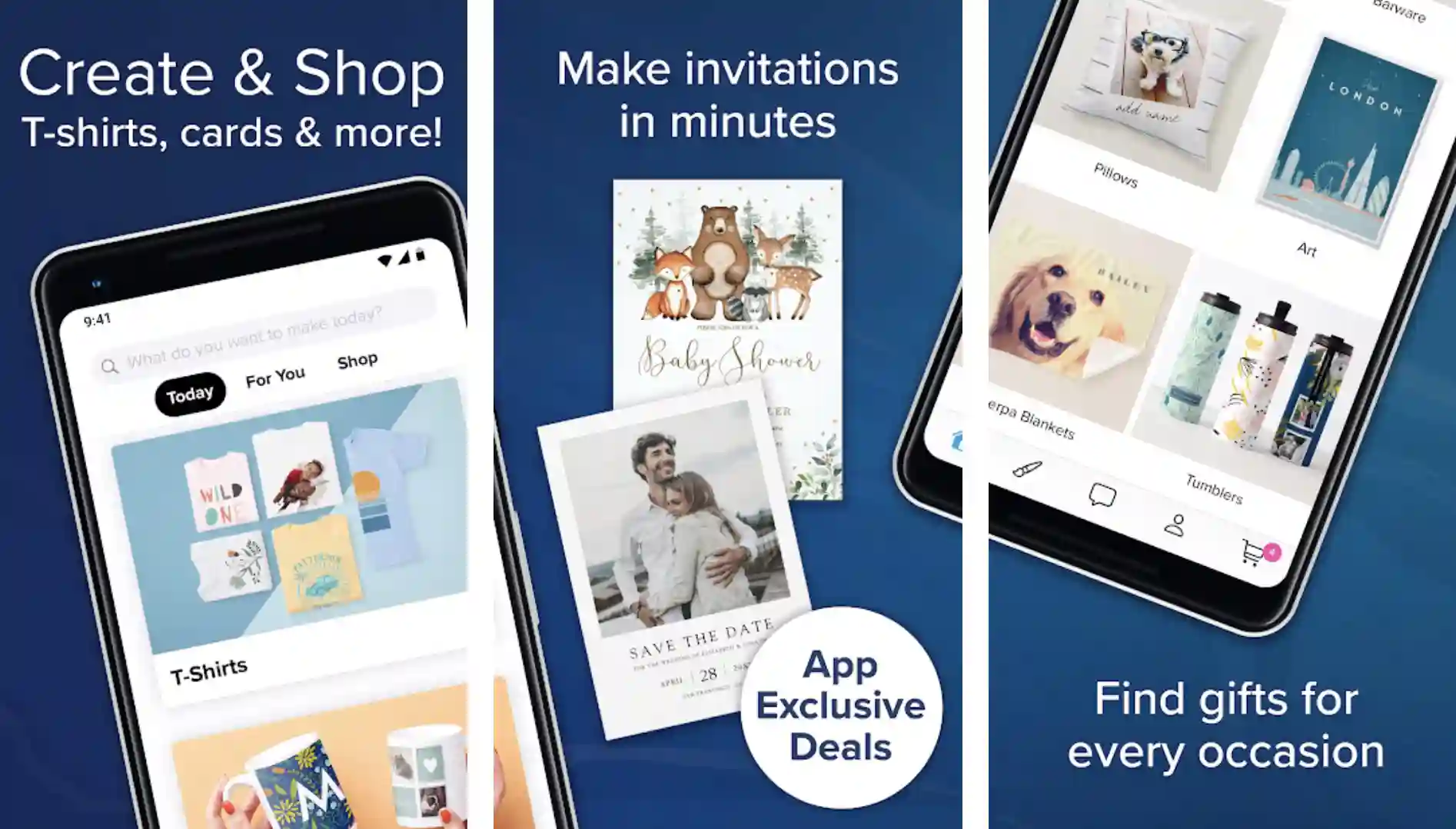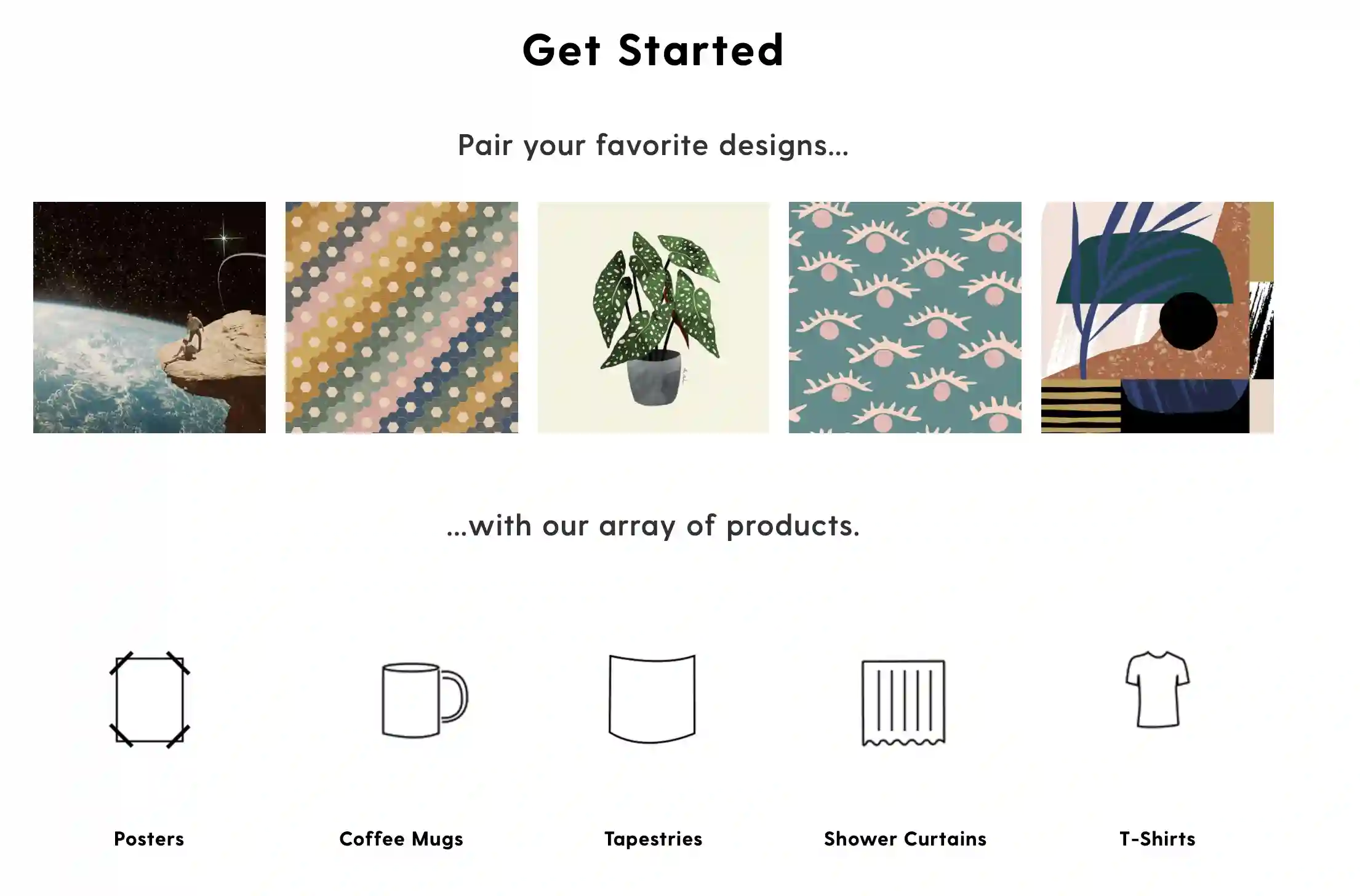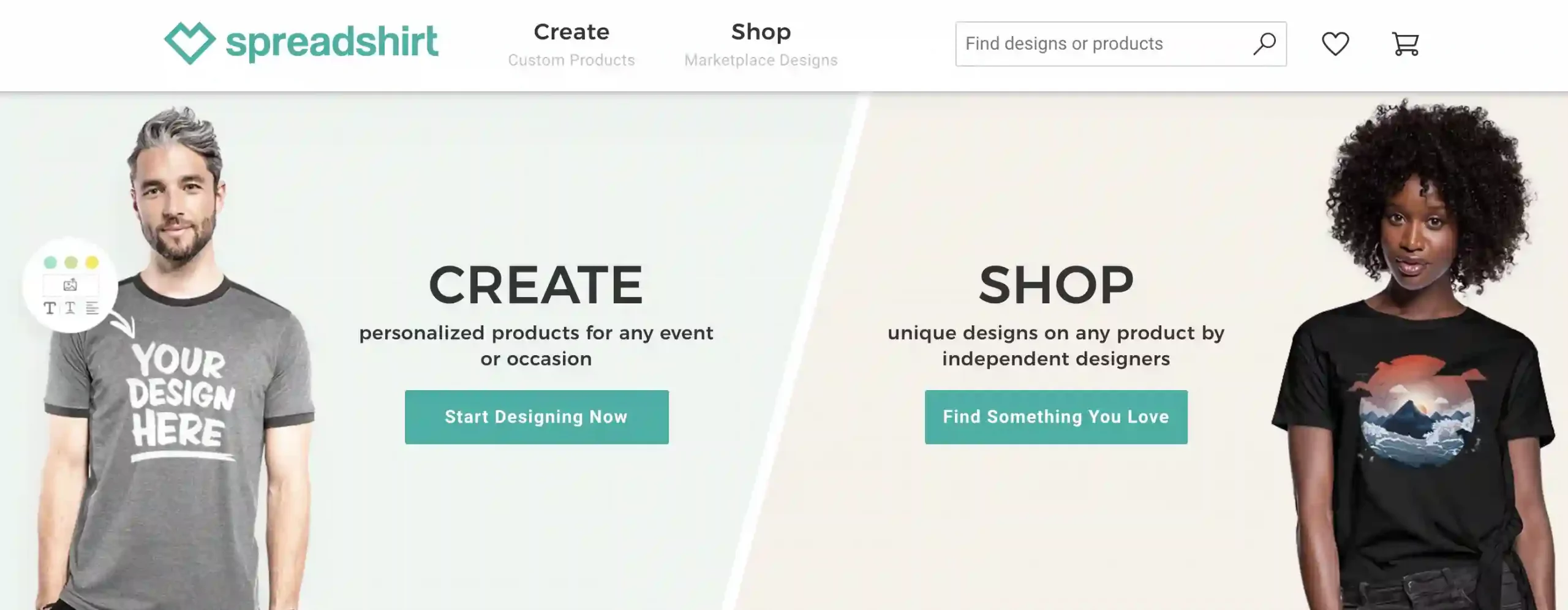Are you a talented artist, designer, or creative enthusiast looking for fresh platforms to display your unique artwork?💁
If you’re seeking alternatives to Redbubble, a leading online marketplace, you’ve come to the right place!
In this article, we’ll unveil a curated list of exceptional platforms offering exciting features and opportunities for artists like you to showcase their creativity and reach a broader audience.
While Redbubble has undoubtedly established itself as a popular platform for artists worldwide, you may face certain challenges or limitations that have prompted you to explore alternative options.
Perhaps you’re seeking greater exposure, more control over pricing, or even unique features to differentiate your artwork from the crowd.
Rest assured, we understand your concerns and have meticulously compiled a selection of top-notch alternatives that address these specific needs.
Imagine having access to platforms with large and diverse user bases and catering to specific niche markets, allowing you to connect with like-minded art enthusiasts who truly appreciate your style.
Envision gaining greater control over your pricing strategies and margins, empowering you to maximize your earnings without compromising quality or creativity.
With these alternatives, you can transcend the limitations you may have encountered on Redbubble and unlock new possibilities for success.
The following sections introduce you to a handpicked collection of remarkable Redbubble alternatives.
Each platform has unique features, advantages, and audiences, ensuring something for everyone.
Whether you’re an illustrator, photographer, graphic designer, or any other artist, you’ll find a platform that aligns with your artistic vision and business goals.
Get ready to expand your horizons and take your artistry to new heights!
Now that we’ve set the stage let’s delve into the captivating world of Redbubble alternatives and discover the perfect platform for your artistic endeavors.
But first, let’s explore why you might be considering these alternatives and how they can address your needs.
Best Redbubble Alternatives For Artists and Designers
1. Teespring
Similar to Redbubble, Teespring is also an e-commerce and print-on-demand-based platform. As the name suggests, it is mainly focused on wearables and clothes.
It is also effortless to use. You design your shirt, set a considerable price on it, and that’s it. You are good to go.
It offers plenty of tools to create and customize your designs and merchandise at wholesale prices. It is a perfect place to start a new wholesale business.
One point you must know is that to be a seller at Teespring; you must buy the items from only here. Teespring is not limited to clothes; it is a massive marketplace for goods like mugs, mobile covers, shirts, etc.
The pricing and the selling fees vary from country to country and depend on the item you choose to sell, even though there are no fees for listing or promoting items.
Teespring is associated with over ten stores and delivers its products to 25+ countries via Wish, Amazon, Rakuten, Walmart, etc.
The most significant advantage of Teespring is that it takes no money on promotional content, so you can easily display your ads on google shopping and other networks without spending any money.
Advantages of Teespring:-
- It optimizes your listing and promotional content in networks like Google ads without cost.
- No storefront fees are required
- Sellers can craft various items
- They are associated with big companies like eBay and Amazon.
Redbubble vs Teespring:-
If you want a wider selection of products, Redbubble may be the better choice. If you want more advanced design tools and marketing support, Teespring may be the better option.
Here’s a table comparing some key features of Redbubble and Teespring:-
| Feature | Redbubble | Teespring |
|---|---|---|
| Product Range | T-shirts, stickers, posters, phone cases, home decor, apparel | T-shirts, hoodies, mugs, phone cases, home decor, apparel |
| Customization | High degree of customization with artist-designed templates | Customization options with a limited number of templates |
| Pricing | Artists set their own profit margins | Fixed pricing with profit margin built into the base price |
| Printing | On-demand printing | On-demand printing |
| Quality | High-quality printing and materials | High-quality printing and materials |
| Shipping | Worldwide shipping | Worldwide shipping |
| Marketing | Redbubble markets products to customers | Teespring relies on the seller to market their products |
| Ease of Use | User-friendly interface | User-friendly interface |
| Customer Support | Responsive customer support | Responsive customer support |
| Community | Active artist community with social features | Active seller community with limited social features |
2. Etsy – Redbubble alternatives To find whatever you’re into
Etsy is hands down one of the best Redbubble Alternatives. Etsy is also an e-commerce company focused chiefly on hand-crafted and vintage goods.
It has the most extensive range of goods available, including bags, jewelry, clothes, home decoratives, artworks, toys, etc. However, only items older than 20 can be sold under the Vintage category.
It is considered one of the best platforms for artists as it helps them to sell their items to millions of buyers all around the globe.
The most significant advantage Etsy offers is that you can sell anything.
From old excel sheets to some vintage silver spoons. You can sell them all. Etsy accepts all types of art forms.
Etsy doesn’t sell mainstream products on other e-commerce sites; they sell artwork exclusively from artists. So if you want to make a lot of money in exchange for your art, Etsy is the best place to do it.
However, Etsy takes its fair share with every sale you make. Etsy charges 5% transaction fees for listing the products for every sale you make, including delivery charges and gift wrap.
Advantages of Etsy:
- A wide variety of items to choose from
- A real professional place to earn money and make a livelihood out of it
- Over 50 million online shoppers monthly, with over 10 million designers
- Integrated through APIs
- Accepts any artwork
Redbubble vs Etsy:–
If you’re selling handmade or vintage items and want access to a large audience, Etsy may be the better choice.
If you’re selling pop culture or fandom-related merchandise and want to take advantage of Redbubble’s print-on-demand model, Redbubble may be the way to go.
Here is a comparison table between Redbubble and Etsy:-
| Feature | Redbubble | Etsy |
|---|---|---|
| Products | Prints, clothing, phone cases, stickers, home decor, stationery, and more | Handmade, vintage, and craft supplies |
| Selling fees | 20% of the product price | Listing fee of $0.20 per item, and a 5% transaction fee |
| Customization | Sellers can customize their products using their own designs or graphics | Sellers can customize their products and offer personalized items to customers |
| Marketplace | Redbubble’s marketplace is geared toward artists and designers | Etsy’s marketplace is geared towards independent sellers and small business owners |
| Audience | Redbubble has a younger demographic and a larger international audience | Etsy has a diverse audience and a strong focus on handmade and vintage products |
| Shipping | Redbubble handles the production and shipping of products, with delivery times varying by location | Etsy sellers handle their own shipping, with delivery times and costs varying by the seller. |
| Branding | Redbubble has a recognizable brand and a large social media following | Etsy has a strong brand and a community-focused approach |
| Customer service | Redbubble provides customer support through email and chat | Etsy provides customer support through email, chat, and phone |
3. Uberprints – Redbubble alternatives To Create your custom T-shirts
Uberprints walks on a similar path as Redbubble but is not as miscellaneous as Redbubble. Still, it doesn’t change that it is a good website for buying custom-made T-shirts, shirts, caps, and other goods.
The good thing about Uberprints is that it has a design studio where you can design your creations with its tools; the best part is that it is free.
You can sign up and checkout once you’re done with your design.
Finally, the art team will look into your design to ensure that everything’s okay with your design or anything offensive that might hurt some communities.
Advantages of Uberprints:
- Brilliant design studio which is free for all
- Lower fees compared to its counterparts
- You can buy goods to resell them
4. Zazzle
Zazzle is also among the most popular sites for custom designs and independent manufacturers.
They’ve paired up with various big brands like Disney and Hallmark, so you can be sure they are legit and one of the best in business.
They have one of the most extensive collections of items, including T-Shirts or any merchandise of popular brands like Marvel, DC, Harry Potter, Star Wars, etc.
Other than that, all the possible things you can think of using daily are available on Zazzle.
It is like a single hub for all your needs. Zazzle provides ample opportunities to grow as a creator or seller and encourages you to create your designs.
Zazzle offers a single design tool to create your infinite ways of designs. They also provide licensed products from brands, as we’ve mentioned earlier.
Advantages of Zazzle:-
- Offers official licensed products from brands like Marvel, DC, etc.
- A very diverse collection of items.
- Reasonable pricing of goods.
- A good platform for creators, sellers, or artists.
Zazzle vs Redbubble:-
If you value greater customization options and higher profit margins, Zazzle may be the better choice. If you prioritize a larger community of buyers and a simpler design process, Redbubble may be the better option.
Here is a comparison table between Redbubble and Zazzle:-
| Criteria | Zazzle | Redbubble |
|---|---|---|
| Products Offered | Customizable products, including clothing, accessories, home decor, and more. | Art prints, apparel, home decor, stickers, and more. |
| Fulfillment Options | Integrates with multiple e-commerce platforms. | Directly sell on the Redbubble marketplace. |
| Printing Technology | Digital printing and embroidery. | Digital printing. |
| Shipping | Worldwide shipping from their fulfillment centers. | Worldwide shipping from their own fulfillment center. |
| Pricing | Offers competitive prices. | Generally affordable prices. |
| Customization | Offers a variety of customization options for each product. | Offers some customization options for each product. |
| Customer Support | Offers customer support via phone, email, and chat. | Offers customer support via email and chat. |
Download the App from Google Play Store
Download the App from Apple App Store
5. CustomINK
CustomInk is very similar to yet different from Redbubble. If you are a seller looking to sell your custom-made items, Customink isn’t the right place for you, as it does not integrate with online retailers.
It does provide tools to create your designs, but you can’t sell those on the custom ink website.
Still, Customink is an excellent website regarding the variety of goods they sell, from jackets and shirts to footwear; they have them all.
You can still design products or order from top brands like Puma, Adidas, etc.
Advantages of Customink:-
- Delivers quality materials from top brands
- Design support for the products of big brands
- Bunch of categories to choose from for items
6. Threadless
If you love fine arts, this is the right place to be. Threadless offers an excellent way of selling unique designs online without fearing manufacturing processes.
Threadless provides incredible control over your storefront, unlike any other website. You can customize your storefront to your liking, match your vision, and make your products more appealing.
Each product has a base cost, and you can decide how much you want it to sell for. You can determine your pricing.
Every purchase directly supports the actual artists who created that design. It is one of the best platforms to test if you want an alternative to Redbubble.
Threadless offers a lot of diversity in their products ranging from kids to adults, masks, clothes, headwear, home decoratives, etc.
Advantages of Threadless:-
- You can decide the pricing of your products without any limitations
- Great customization options for the Storefront.
- Benefits directly to the artists
7. Printful – Redbubble alternatives To Design and sell custom products
Printful is slowly becoming one of the popular print-on-demand marketplaces, which is justified. It is also a drop-shipping platform with other online stores and ships the items under your brand name.
Printful stores all your items in their warehouse, and when a buyer orders the item, they automatically export the item with packaging.
They store various items in their inventory, like phone cases, hoodies, embroidered shirts, etc., resulting in great buyer options. You have to select an item of your choice and customize them accordingly.
The studio tools are easy to use, so you won’t experience any difficulties while designing the object of your choice.
Compared to Redbubble, it is quite more accessible for an ordinary user to develop products.
Advantages of Printful:-
- Easier to design products
- Supports international currencies like INR, AUD
- Dropships are available
- Integrated with 300+ marketplaces
Printful vs Redbubble:-
Printful is a POD service that handles production, shipping, and fulfillment. At the same time, Redbubble is a marketplace that allows users to upload designs and sell them on various products, with third-party vendors handling production and shipping.
| Criteria | Printful | Redbubble |
|---|---|---|
| Products Offered | T-shirts, hoodies, hats, bags, posters, mugs, and more. | Art prints, apparel, home decor, stickers, and more. |
| Fulfillment Options | Integrates with multiple e-commerce platforms. | Directly sell on Redbubble marketplace. |
| Printing Technology | Direct-to-garment (DTG), embroidery, and more. | Digital printing. |
| Shipping | Worldwide shipping from multiple fulfillment centers. | Worldwide shipping from their fulfillment center. |
| Pricing | Offers competitive prices. | Generally affordable prices. |
| Customization | Offers a variety of customization options for each product. | Offers some customization options for each product. |
| Customer Support | Offers a variety of customer support options. | Offers customer support via email and chat. |
8. Society6
Society6 was developed by thousands of independent artists from all around the globe. Society6 can be an excellent website for people who want to make more money by their artistic values.
As for the sellers, you can sell any form of art on society6 if it comes under the guidelines of fair use and rules set forth by the society6 admins.
Buyers can choose designs printed on products like phone cases, pillow covers, and whatnot. If you are an artist, you will get your pay cut when a product is sold with your design.
Like the Redbubble Alternatives websites mentioned above, Society6 also offers various goods like home decor, wall art, apparel, furniture, tech accessories, and lifestyle goods used daily.
Advantages of Society6:-
- Freedom to sell any form of art
- Every purchase directly helps the artist behind it
- It has got something for everyone
- Well-designed aesthetics, especially wall art and home decor
Redbubble vs society6:-
If you want more control over your designs and pricing, and a wider variety of products to sell, Redbubble may be the better choice. Society6 may be the way to go if you prioritize quality control and exclusivity.
| Criteria | Redbubble | Society6 |
|---|---|---|
| Products Offered | Art prints, apparel, home decor, stickers, and more. | Art prints, home decor, furniture, tech accessories, and more. |
| Fulfillment Options | Directly sell on Redbubble marketplace. | Directly sell on Society6 marketplace. |
| Printing Technology | Digital printing. | Digital printing. |
| Shipping | Worldwide shipping from their own fulfillment center. | Worldwide shipping from their fulfillment center. |
| Pricing | Generally affordable prices. | Offers competitive prices. |
| Customization | Offers some customization options for each product. | Offers a variety of customization options for each product. |
| Customer Support | Offers customer support via email and chat. | Offers customer support via email, phone, and live chat. |
9. Teepublic
Teepublic is also a print-on-demand-based website with the 3rd highest internet traffic just after Redbubble and Zazzle, which we’ve already discussed before.
Although Teepublic doesn’t have as much variety of products as Redbubble and Zazzle have, they check all the major boxes. Quite possibly, Teepublic has the quickest upload process among all the pioneers in the print-on-demand world.
You must know about Teepublic because they have fixed royalties to their designers and can dip down during the sales period.
This means the cut that an artist receives after one of the products is purchased is fixed.
Teespring is a near-perfect place for buyers to buy products, as they offer all the primary products daily.
Advantages of Teepublic:-
- Mainly focused on t-shirts and items of clothing
- Large satisfied audience
- Quality products
- Artist branding options
Redbubble vs TeePublic:-
If you’re looking for a wider range of products and more control over how your designs are marketed, Redbubble might be a better choice.
However, if you’re primarily interested in selling t-shirts and other apparel items, TeePublic’s lower pricing and higher commission rate might be more appealing.
Here’s a table comparing Redbubble and TeePublic:-
| Platform | Description | Products | Pricing | Artist Commission | User Interface | Customer Reach |
|---|---|---|---|---|---|---|
| Redbubble | An online marketplace for artists and designers to sell their artwork on a variety of products. | T-shirts, stickers, phone cases, wall art, home decor, and more. | Set by artists, but Redbubble takes a base fee. | Artists set their own commission percentage. | Easy to use, with a dashboard for managing products and sales. | Large and diverse customer base, with a global reach. |
| TeePublic | An online marketplace that sells artist-designed t-shirts and other products. | T-shirts, hoodies, tank tops, phone cases, stickers, and more. | Set by TeePublic, but artists can adjust their prices within a certain range. | Artists earn a flat commission rate for each product sold. | Easy to use, with a dashboard for managing products and sales. | Large customer base, with a focus on pop culture and fandom-related designs. |
10. Displate
Displate is amongst the most trustworthy print-on-demand platforms that we’ve come across.
Displate is a well-organized site that helps the customer find its product more easily.
Even though it is a minimal website compared to the likes of Redbubble, the organic traffic of this website is on constant positive growth.
Above all that, Displate has many followers on social media, which helps them even more, to be in touch with ordinary users. The display also offers all the goods you expect from a POD company.
The most significant edge that Displate has over its counterparts is its excellent customer support. People are more than satisfied with the customer support that Displate has to offer.
The quality of the items is impressive. Displate is mainly known for its wall art and posters of metals used in home decor.
Advantages of Displate:-
- Excellent customer support
- Well organized site
- Increasing steadily day by day
- Quality products
11. Spreadshirt
Spreadshirt deals majorly on apparel. You can find bodysuits, tank tops, t-shirts, shirts, hoodies, and undergarments in a wide range on this website.
Despite being heavily focused on apparel, they offer products like mugs, bags, phone cases, and several other products that can be designed and customized.
The best thing that Spreadshirt offers is promo codes. You can find promo codes directly on their official website without fuss.
It also delivers in most countries, and the delivery period is quite decent. Most customer reviews are positive, and the website’s UI is amazing.
Advantages Of Spreadshirt:-
- Promo codes are available on the website
- UI is straightforward to use
- Decent customer reviews
Redbubble vs Spreadshirt:-
Redbubble may be a better option for artists looking for a wider variety of products and wanting to tap into a larger user community.
In comparison, Spreadshirt may be a better option for artists who want more control over the customization options for their products and who are targeting international markets.
here’s a table comparing Redbubble and Spreadshirt:-
| Feature | Redbubble | Spreadshirt |
|---|---|---|
| Product Selection | Offers a wide range of products including clothing, stickers, phone cases, home decor, and more. | Offers a variety of products including clothing, accessories, home decor, and more. |
| Customization | Allows users to upload their own designs or use designs from the Redbubble marketplace. | Allows users to upload their own designs or use designs from the Spreadshirt marketplace. |
| Printing Technique | Uses direct-to-garment (DTG) printing for most products. | Offers several printing techniques, including DTG, screen printing, and embroidery. |
| Quality Control | Has a strict quality control process for all products. | Has a quality control process, but some users report inconsistencies in print quality. |
| Shipping | Offers worldwide shipping with different delivery options. | Offers worldwide shipping with different delivery options. |
| Pricing | Generally has higher base prices but offers frequent sales and discounts. | Generally has lower base prices but fewer sales and discounts. |
| Profit Margin | Offers a standard 20% profit margin for artists and designers. | Allows users to set their own profit margin, with a maximum of 60%. |
| Customer Support | Offers customer support via email and a help center. | Offers customer support via email, phone, and live chat. |
12. Cafepress
Cafepress is one of the oldest print-on-demand websites in existence. It has been delivering the best quality items to its users and is one of the most popular alternatives to Redbubble.
Cafepress provides its services as cheaply as possible, unlike any print-on-demand website. They offer all the necessary products as a website of this caliber should. The customer service provided by them is top-notch.
Their motto is to create human connections. Thousands of designers work and customize their products daily.
They have a special section for occasional wear, missing from all the other websites mentioned earlier. Despite all that, they offer their products at a very affordable rate.
Advantages of Cafepress:-
- Affordable yet quality products
- Trustworthy
- Decent customer service
Redbubble vs CafePress:-
Both Redbubble and CafePress are good options for artists and designers looking to sell their work online, and the choice between the two will largely depend on personal preferences and the types of products you want to sell.
Regarding pricing, Redbubble tends to be slightly more expensive than CafePress, but it offers higher-quality products and printing. However, since artists can set their prices on Redbubble, the prices can vary widely.
Here is a table summarizing some of the main differences between Redbubble and CafePress:-
| Features | Redbubble | CafePress |
|---|---|---|
| Products | Clothing, stickers, phone cases, home decor | Clothing, accessories, home decor, gifts |
| Customization | Limited customization options | Robust customization tools for creating custom products |
| Artist Commission | Artists can set their own prices and earn a commission on each sale | Artists earn a base royalty rate on each sale |
| Quality | High-quality printing and products | Quality varies depending on the product and design |
| Pricing | Slightly more expensive | Slightly cheaper |
| Community | Strong artist and customer community with features like artist profiles and customer reviews | Established user base with fewer community features |
Why do we print on products?
So far, we’ve discussed all the print-on-demand websites, their working, benefits to the artists, and customer satisfaction. But why do we need to print or design products? The answer is simple. Our mind is artistic and humorous.
While some do this because it is their passion and they want to show the world what they’ve created, some are passionate about colors and art.
For some, it is simply showing love to their loved ones. I mean, who doesn’t want a T-shirt that has their pet’s image printed on it? These are some minor points that attempt to answer quite an enormous question.
Printify vs redbubble:-
If you prioritize product selection and exposure through a large marketplace, Redbubble may be the better option.
If you prioritize customization options, pricing control, and integration with other e-commerce platforms, Printify may be the better choice.
| Feature | Printify | Redbubble |
|---|---|---|
| Products Offered | T-shirts, hoodies, hats, phone cases, mugs, and more | T-shirts, stickers, wall art, home decor, and more |
| Print Quality | High-quality prints on premium products | High-quality prints on premium products |
| Pricing | Competitive pricing with no upfront costs | Competitive pricing with no upfront costs |
| Shipping | Worldwide shipping with various carrier options | Worldwide shipping with various carrier options |
| Integrations | Integrates with major eCommerce platforms and marketplaces | Integrates with major eCommerce platforms and marketplaces |
| Customer Service | Email, chat, and phone support are available | Email and chat support are available |
Redbubble vs Amazon merch
If you’re looking to sell a wide variety of products and potentially reach a larger audience, Redbubble may be the better choice.
Amazon Merch may be the better option if you’re primarily interested in selling t-shirts and benefitting from Amazon’s massive customer base.
here’s a table comparing Redbubble and Amazon Merch:-
| Feature | Redbubble | Amazon Merch |
|---|---|---|
| Type of products | Art prints, clothing, phone cases, stickers, home decor, stationery | T-shirts, hoodies, sweatshirts, tank tops, long sleeve tees, phone cases |
| Design options | Upload your own design, create designs using Redbubble’s tools | Upload your own design |
| Product customization | Limited product customization options | Limited product customization options |
| Marketplace | Redbubble’s marketplace is accessible to everyone, with over 700,000 independent artists selling their designs | Amazon’s marketplace is only accessible to approved designers |
| Royalties | Artists set their own royalty rates, which can range from 5% to 20% | Royalty rates are fixed and determined by Amazon, based on the product’s selling price and category |
| Pricing | Redbubble’s pricing is determined by the artist, but the platform suggests a base price for each product | Amazon determines the product’s selling price, but designers can set a list price that Amazon must adhere to |
| Shipping | Redbubble handles production and shipping | Amazon handles production and shipping |
| Audience | Redbubble’s audience is primarily art enthusiasts and people looking for unique designs | Amazon’s audience is primarily people looking for branded merchandise |
| Availability | Products are available worldwide | Products are only available in select countries |
| Ease of use | Redbubble’s platform is user-friendly and easy to navigate | Amazon Merch’s platform can be difficult to use for new designers |
| Approval process | No approval process for designers | Amazon Merch must approve designers before they can sell their products |
| Branding | Products are branded with the Redbubble logo | Products are not branded with the Amazon Merch logo |
Redbubble vs Threadless
If you are looking for a wider range of products to sell and more control over your profit margins, Redbubble may be a better fit.
If you are interested in participating in design challenges and being part of a community of artists, Threadless may be a better choice.
here’s a comparison table between Redbubble and Threadless:-
| Feature | Redbubble | Threadless |
|---|---|---|
| Products | T-shirts, hoodies, stickers, phone cases, wall art, home decor, etc. | T-shirts, tank tops, sweatshirts, hoodies, phone cases, wall art, home decor, etc. |
| Artist Support | 10-30% of the base price, artists set their own markup | $1,000 cash prize for each design printed, artists earn royalties on each sale |
| Quality Control | Automated image checks for resolution and quality, human review for copyright infringement | Manual review process for each design submission |
| Community | Active community of artists and customers, ability to follow and connect with artists | Focus on artist community, allows for critiques and feedback on designs |
| Shipping | Worldwide shipping, shipping times vary based on location and shipping method | Worldwide shipping, shipping times vary based on location and shipping method |
| Pricing | Prices vary based on product type and artist markup | Prices vary based on product type and design popularity |
| Sales and Deals | Frequent sales and discounts on specific products and designs | Occasional sales and discounts, seasonal promotions |
| Customer Support | Email support, customer reviews and ratings | Email and phone support, customer reviews and ratings |
Redbubble vs Zazzle vs CafePress
If you value community and artist-friendly policies, Redbubble may be your best choice. If you want a larger selection of products and a user-friendly design tool, Zazzle may be the way to go.
And if you want to build your brand and have more control over your storefront, CafePress may be the best fit.
Here’s a table comparing Redbubble, Zazzle, and CafePress:-
| Feature | Redbubble | Zazzle | CafePress |
|---|---|---|---|
| Products Offered | Art Prints, Stickers, Phone Cases, T-Shirts, Home Decor, Stationery, and more. | T-Shirts, Phone Cases, Home Decor, Art Prints, Office Supplies, and more. | T-Shirts, Mugs, Home Decor, Stationery, Phone Cases, and more. |
| Design Options | Allows designers to upload their designs and customize products. | Allows designers to upload their designs and customize products. | Allows designers to upload their designs and customize products. |
| Commission | Varies by product. Artists set their own commission rate. | Varies by product. Artists set their own commission rate. | Varies by product. Artists set their own commission rate. |
| Quality | High-quality products with vibrant colors and sharp designs. | High-quality products with vibrant colors and sharp designs. | High-quality products with vibrant colors and sharp designs. |
| Shipping | Worldwide shipping. Shipping times vary depending on the product and location. | Worldwide shipping. Shipping times vary depending on the product and location. | Worldwide shipping. Shipping times vary depending on the product and location. |
| Customer Service | Excellent customer service with a responsive support team. | Good customer service with a responsive support team. | Good customer service with a responsive support team. |
| Ease of Use | User-friendly interface with easy-to-use design tools. | User-friendly interface with easy-to-use design tools. | User-friendly interface with easy-to-use design tools. |
| Popularity | Popular platform with a large user base. | Popular platform with a large user base. | Established platform with a loyal following. |
| Special Features | Integration with social media platforms. | Integration with social media platforms. | Integration with social media platforms. |
Redbubble vs Fine Art America
If you want to sell a wide range of products and value a supportive community, Redbubble may be the better choice. However, Fine Art America may be better if you prioritize quality control and a larger selection of traditional art prints.
here’s a table comparing Redbubble and Fine Art America:-
| Feature | Redbubble | Fine Art America |
|---|---|---|
| Types of Products | T-shirts, stickers, posters, phone cases, home decor | Prints, canvas, framed prints, metal prints, phone cases, etc. |
| Artists/Creators Support | Both amateur and professional artists can sell work | Both amateur and professional artists can sell work |
| Quality of Products | Good quality, although not necessarily high-end | High quality, catered towards professional artists |
| Pricing | Generally affordable, with some higher-priced options | Wide range of pricing, but generally more expensive than Redbubble |
| Customer Base | More geared towards casual buyers and fans | More geared towards art collectors and professional buyers |
| Shipping | Worldwide shipping, with varying delivery times | Worldwide shipping, with varying delivery times |
| Customization Options | Limited customization options for products | Extensive customization options for products |
| Marketing/Discovery | Relies heavily on social media and self-promotion | Offers marketing tools and features to help artists promote their work |
| Overall | Good platform for casual artists and buyers | Better suited for professional artists and collectors |
Redbubble Alternatives for Stickers
Artists and designers are spoilt for choice when it comes to redbubble alternatives for stickers.
These vibrant and expressive adhesive artworks have gained immense popularity recently, finding their way onto laptops, water bottles, notebooks, and more.
If you want to expand your options beyond Redbubble, here are some noteworthy alternatives to fuel your creative aspirations.
Zazzle:- Known for its diverse range of customizable products, Zazzle offers a fantastic platform for sticker enthusiasts. Their extensive marketplace provides various design options, including custom-shaped stickers and the opportunity to create your storefront.
Society6:- Recognized for its artist-centric approach, Society6 offers a seamless experience for artists looking to showcase their sticker creations. With their wide selection of sizes and formats, including die-cut stickers and vinyl decals, artists can explore different ways to make their designs stand out.
Etsy:- A beloved online marketplace for handmade and unique products, Etsy provides a bustling platform for sticker artists. With its vast community of sellers, buyers can discover an array of artisanal stickers that capture their individuality.
Inktale:- If you’re seeking a user-friendly interface and a supportive community, Inktale is worth considering. This platform offers premium vinyl stickers and various customization options, allowing artists to bring their designs to life in exquisite detail.
Sticker Mule:- Renowned for its high-quality stickers and rapid production turnaround, it caters to businesses and independent artists.
Their wide selection of materials, finishes, and cutting options ensures that your sticker creations will leave a lasting impression.
📗FAQ’s
Is there another site like Redbubble?
If you’re an artist or designer looking for a platform that provides a similar experience to Redbubble, you’ll be pleased to know that there are indeed alternatives out there.
While Redbubble has carved out its space as a popular Print-on-Demand (POD) marketplace, other sites offer comparable features and opportunities for creative individuals seeking to showcase their work.
One such platform is Society6, which boasts a vibrant community of artists and a diverse range of products.
With its intuitive interface and seamless social media integration, Society6 provides a conducive environment for artists to gain exposure and connect with a wider audience.
Threadless is another notable contender in the POD space. This platform sets itself apart by prioritizing sustainability and championing community-driven design selections.
Artists who value eco-consciousness and collaborative creativity will find Threadless a compelling alternative.
If you’re seeking a platform that supports independent artists and offers competitive royalty rates, look no further than Teepublic.
With its artist-friendly approach and supportive community, Teepublic empowers creators to monetize their work and build a loyal following.
For those who desire greater control over product customization and design, Zazzle is an excellent choice.
With a comprehensive suite of tools and an extensive product catalog, Zazzle allows artists to personalize their creations and reach a broad customer base.
Here’s a table comparing Redbubble to other similar websites:-
| Website | Description | Features |
|---|---|---|
| Society6 | Online marketplace for artists and designers | Print-on-demand products, including art prints, home decor, and apparel |
| Zazzle | Customizable products and designs marketplace | Wide range of customizable items, such as apparel, home decor, and gifts |
| Teepublic | Platform for artists to sell their designs on apparel | T-shirts, hoodies, and other apparel with unique designs |
| Threadless | Community-based platform for artist-designed products | Apparel, accessories, and home decor designed by independent artists |
| TeeSpring | E-commerce platform for selling custom merchandise | Customizable clothing, accessories, and home goods |
| Design by Humans | Marketplace for independent artists and gamers | T-shirts, hoodies, phone cases, and art prints featuring unique designs |
| Spreadshirt | Customizable clothing and accessories marketplace | Personalized apparel, bags, and accessories with user-created designs |
| Society of Print | Artist-driven platform for selling limited edition art | Limited edition prints, art books, and collectibles |
Which is better, Zazzle or Redbubble?
It depends on what you’re looking for. Zazzle and Redbubble offer a wide range of products and services for creators.
Still, Zazzle may be a better option for those who want more control over their designs and products, while Redbubble offers a more streamlined platform and a larger customer base.
Is Society6 better than Redbubble?
Again, it depends on your specific needs and preferences. Society6 offers a similar range of products and services as Redbubble, but it may be a better choice for those who want to focus on selling art prints and home decor items.
What is the downside of Redbubble?
One potential downside of Redbubble is that the site takes a significant portion of the sale price for each product sold, which can eat into an artist’s profits.
Additionally, some artists may find it difficult to stand out in a crowded marketplace with so many other creators competing for attention.
Is Redbubble still popular?
Yes, Redbubble is still a popular platform for artists and creators to sell their work online.
Is Redbubble still worth it?
Whether or not Redbubble is worth it depends on your goals as an artist or creator. While it can be a great way to reach a wider audience and make some extra money, it may not be the best choice for everyone.
Do people actually make money on Zazzle?
Yes, many people make money selling their designs on Zazzle. However, like any online marketplace, success on Zazzle depends on various factors, including the quality of your designs, your marketing efforts, and the competitiveness of the marketplace.
Do you make money selling on Zazzle?
Yes, you can make money selling your designs on Zazzle. However, as with any online marketplace, success is not guaranteed, and it may take some time and effort to build a following and start making sales.
Is it worth selling on Society6?
Whether or not it’s worth selling on Society6 depends on your goals as an artist or creator. Society6 can be a great platform for selling art prints and home decor items, but like any online marketplace, success is not guaranteed.
Is Redbubble or Etsy more popular?
Redbubble and Etsy have large and active communities of creators and customers, so it’s difficult to say which is more popular. However, Etsy may be a better choice for those who want to sell handmade or vintage items, while Redbubble is focused on art and design.
Do artists make money on society6?
Yes, many artists make money selling their work on Society6. However, as with any online marketplace, success depends on various factors, including the quality of your designs and marketing efforts.
Can I sell the same art on Redbubble and society6?
Yes, you can sell the same art on Redbubble and Society6 as long as you own the design rights.
Do people on Redbubble get sued?
While it’s possible for creators on Redbubble to face legal challenges over copyright infringement or other issues, the site takes steps to prevent and remove infringing content.
Why did I get banned from Redbubble?
There are many reasons why a user might get banned from Redbubble, including violating the site’s terms of service, infringing on the rights of others, or engaging in fraudulent activity.
Conclusion on redbubble alternatives
In conclusion, if you’re searching for alternatives to Redbubble, you’re in luck. The options are plentiful, and each platform offers unique features and benefits.
By exploring these alternatives, you can find the perfect platform that aligns with your creative vision and goals.
When it comes to Print-on-Demand services, Society6 stands out as a top choice with its vast artist community and diverse product range.
Its seamless integration with popular social media platforms allows you to promote your work effortlessly.
If you’re seeking a platform that emphasizes eco-friendly practices, consider Threadless. With its commitment to sustainability and community-driven design selections, Threadless offers a refreshing approach to showcasing your artwork.
For those looking for a marketplace that supports independent artists, Teepublic is an excellent option. Its supportive community and competitive royalty rates make it an attractive choice for creators of all kinds.
Lastly, Zazzle provides a comprehensive set of tools and customization options, making it a great alternative for those who want full control over their products and designs.
Remember, the key to finding the best Redbubble alternative lies in understanding your needs as an artist or designer. Take the time to explore these options, weigh the pros and cons, and find the platform that best suits your artistic aspirations.
Whether you’re looking for a platform with a large customer base, eco-conscious values, supportive artist communities, or extensive customization options, these Redbubble alternatives are here to help you amplify your creative journey.
So, step outside the boundaries and dive into the exciting world of these alternatives. Embrace the opportunities they present and watch your artistic vision come to life.
Start exploring today and unlock the possibilities awaiting you beyond Redbubble!




